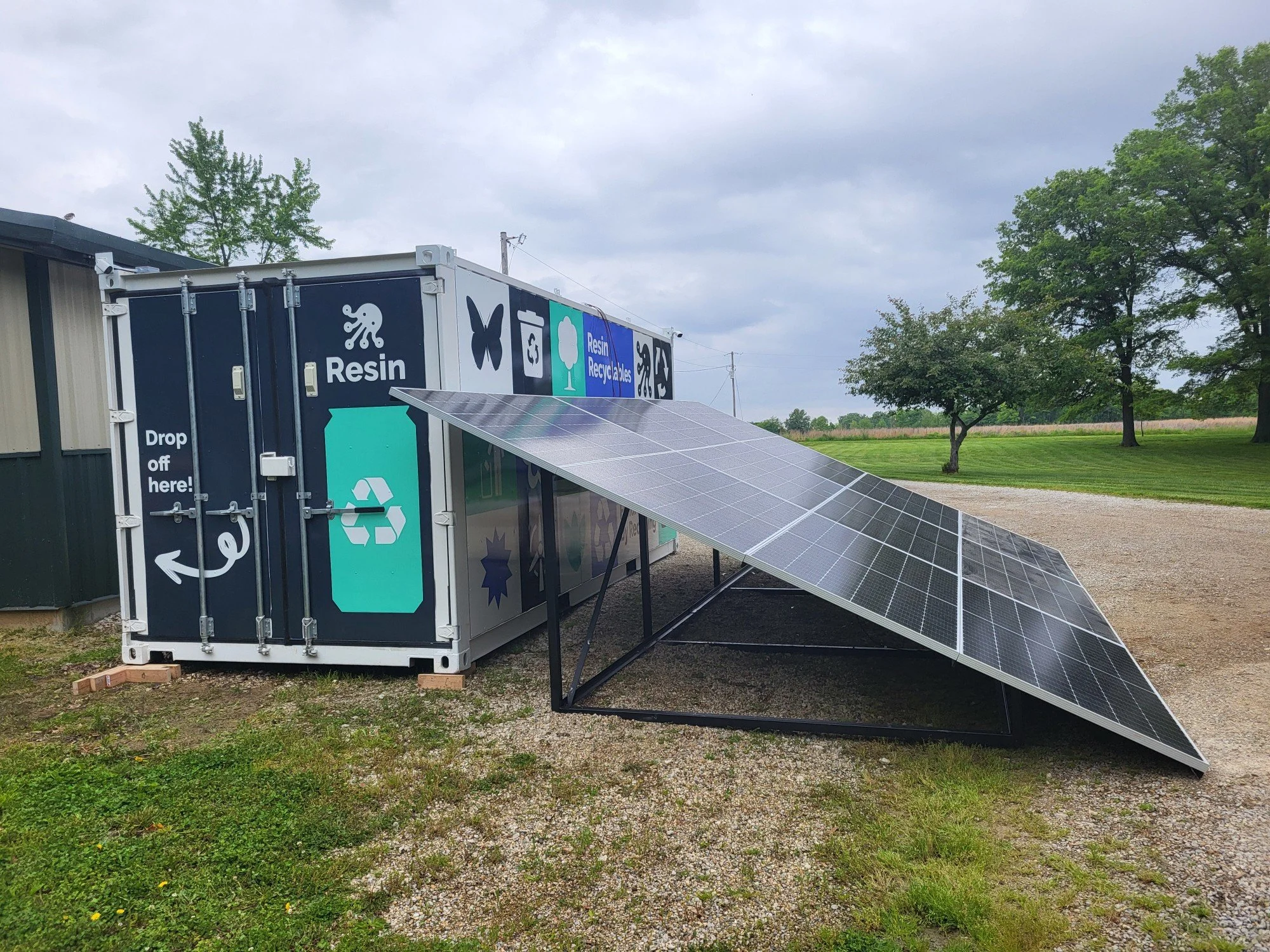Spring 2025: Racing Toward Deployment 🏎️
This spring, Kelly and I competed in a friendly race. I focused on manufacturing our recycling station as a fully self-contained unit inside a shipping container and revamping our app for our next stage of growth. Meanwhile, Kelly was out securing partners to host our next stations.
Could I finish the build before she landed a site? Could she sign a partner before I had a container ready to roll? Spoiler: Kelly won… and then lapped me by signing a second partner.
We’re using these two deployments as case studies to show how Resin can supercharge a campus’ sustainability efforts without creating extra work for already busy campus facilities teams.
Right now, our first container station is in testing. Assuming things stay on track, we’ll deploy it later this month. Then we’re on a tight timeline to manufacture and deliver the second station in time for the new school year. This first build is our chance to iron out any kinks before we hit repeat.
My prediction for the song of the summer 2025? The gentle hum of a station powering on.
🥫 Aluminum: The Magic Material
We’ve been doubling down on aluminum. The more we learn, the more excited we get. Aluminum is a strategic mineral, critical to U.S. national defense and essential to any serious plan for decarbonizing our economy.
Yet, we’re currently throwing away over $1 billion worth of aluminum cans every year. We’ve taken a step backward over the last 30 years, recycling far less aluminum today than we did in 1990. We are excited to make a difference with our scalable platform, starting on college campuses and growing from there.
🔧 Technical Spotlight: Lessons in High Voltage
This spring, I stepped into the world of electrical engineering to figure out how we will safely power and control our big machines.
Our recycling station uses 3 beefy motors. One of them is a 3-horsepower blower that needs three-phase power, a type commonly used for industrial equipment. But the power coming into the station is just regular single-phase, like what you'd find at home. To make it work, we use a Variable Frequency Drive (VFD). It converts the power, lets us monitor and control its speed and energy usage, and helps the motor start without a huge energy spike.
Speaking of energy spikes, big machines really don’t like them. Sudden surges can cause components to overheat or even break permanently. To protect against spikes, like those from lightning strikes or other equipment turning on suddenly, we added surge suppressors to stop unexpected bursts of electricity before they can do any damage.
We also had to figure out how to turn the motor on and off safely. For low-power devices, you can use a relay, which uses a small signal to control a larger circuit. But for high-power equipment like our motors, you need something more heavy-duty: a contactor. I finally understood the difference after asking the basic question: “What’s the difference between a contactor and a relay?” Turns out, they serve the same purpose, they’re just built for different power levels.
☀️ Meet our Solar Expert: John Bruce
When we decided to containerize our recycling stations, going off-grid became a key design goal. Running power to a container can be pricey, especially in areas where utilities require underground lines. In some cases, the cost of connecting to the grid can rival the cost of building an entire station.
John Bruce, a solar industry veteran with over 20 years of experience, has guided us through the world of solar: where to start, what to buy, how to safely transport racks and panels, and how to integrate the whole setup seamlessly. John's expertise helped us design a fully functional, mobile solar system that fits our product needs. From vendor guidance to understanding standard industry practices, he’s been instrumental in helping Resin take this big step.
🎓 Conferences, Connections, and Community
We hit the road this spring! Resin sponsored the IGEN Conference (Illinois Green Economy Network, a group of community college sustainability professionals) and attended the North American Green Aluminum Summit. These relatively small, focused conferences have been a great way to build high-quality connections with people and organizations that are aligned with our mission.
🔮 Looking Ahead: Two Campus Partners
We signed two colleges this spring, our first official site partners! Our container stations will land on both campuses this fall, just in time for the 2025–2026 school year. These teams are thoughtful design partners, and we’re excited to build alongside them. More to come!



